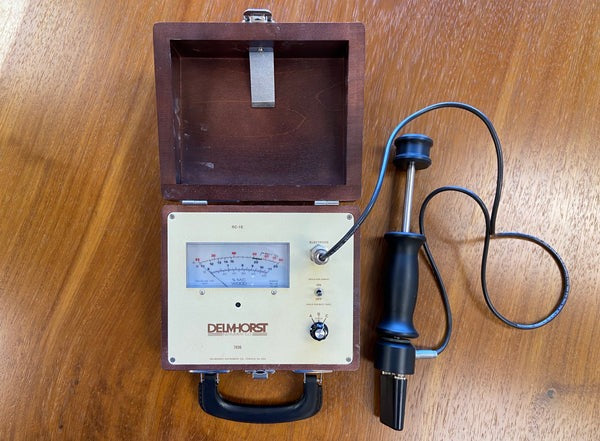"Wet wood is worse than no wood." Kent Mace
Did you know that we will Facetime you while we run a moisture meter over the slabs you are considering purchasing? While we 100% guarantee the wood that we sell, and every piece in our open warehouse is ready to be made into your woodworking project, we know that not everyone has had the best time out there buying wood. Some of you have purchased slabs off the internet from other wood companies (even VERY expensive slabs) only to have them arrive with a moisture content that is way too high for your environment.
We want you to be informed and completely confident in your purchase from us. Your project is our project. Your success is our success. You deserve a slab that arrives ready to be made into your project, and you deserve to be part of that process.
We are wood drying experts. The Southwest is dry! We LOVE our climate, and we credit it with making us the best at wood drying in the industry. When we dry wood, we have to ensure that it is suited for Colorado’s arid environment.
We have two kilns in Southern Colorado that we use to bring our wood down to the right MC for that species and dimension in our climate. Sometimes this means 8%, but sometimes it means 4.5%. We run an AirVac kiln and a Nyle dehumidification kiln and between the two, we can dry around 12,500 board feet of wood at a time. Check out our kiln dry page for a more in depth look at our drying operation.
Meters We Use

There are two different meters we use to measure moisture. For quick checking we use a Wagner L610 digital meter. The meter reads differently depending on the species being measured, and it has a pre set selection of 32 common wood species.

For heavy duty measuring we use a Delmhorst RC-1E moisture meter. The RC-1E measures moisture content by reading electrodes that are pounded into the surface of a slab. It will read incredibly accurately from 6% to 80%, on three range scales. Even though the slab ends up with two little poke holes, it’s worth it to get a precise reading, and it’s nothing a little epoxy can’t fix.
The average moisture content of wood used in woodworking needs to be lower in the southwestern United States than on the coasts due to differences in relative humidity between these regions. Wood naturally absorbs or releases moisture to reach equilibrium with the surrounding environment which is called the Equilibrium Moisture Content (EMC). The southwestern United States has a drier climate with lower average relative humidity. Because wood seeks equilibrium, wood used for woodworking projects in these areas needs to have a lower average moisture content (MC) to prevent excessive shrinking and warping.
Almost all areas in the world have a higher average relative humidity compared to Colorado. Woodworking projects in less arid environments can use wood with a slightly higher average moisture content, but even in these climates, it is better to start with wood that has a lower MC and allow it to come back up to equilibrium instead of risking the continued loss of moisture and the resulting tension and movement that can result in warping and cracking. In any environment, wood with a higher MC will lose moisture into the surrounding air. Woodworkers in all regions need to start their woodworking process with a lower average MC to help mitigate such problems.
Acclimation is recommended on all wood, even when using wood with the appropriate MC, as it's crucial to allow the wood to adapt to the specific workshop and final location's environment before construction. But, this process is accomplished in days with properly dried wood at a lower MC.
Not all species are the same! Different wood species have varying inherent moisture content levels. Woodworkers should consider the specific wood type and its recommended MC range for the project's location. We can talk your through the complexities of your location in relation to the species and dimensions of the wood you need for your project.
By understanding the relationship between equilibrium moisture content, relative humidity, and wood's moisture content, we can ensure that your project remains stable and beautiful for years to come.
In order to track the drying process in our kilns, we use radio frequency probes that are directly inserted into the wood in the kiln at strategic locations. Those probes constantly feed data back to our system and that data is complied and monitored so that we can adjust settings within the kiln to ensure that the wood not only reaches the targeted MC, but also adjusts the system to create the least amount of tension and adverse movement. Kiln drying is a SLOW process, and we embrace every extra day and sometimes months it takes to produce the absolute best and most stable material possible.

The CS Woods kiln monitoring computer in early 2024. Note the Core1 / Core 2 / Shell1 / Shell 2 moisture contents. This load is done and ready to be inventoried and will be up for sale in our Denver warehouse!

